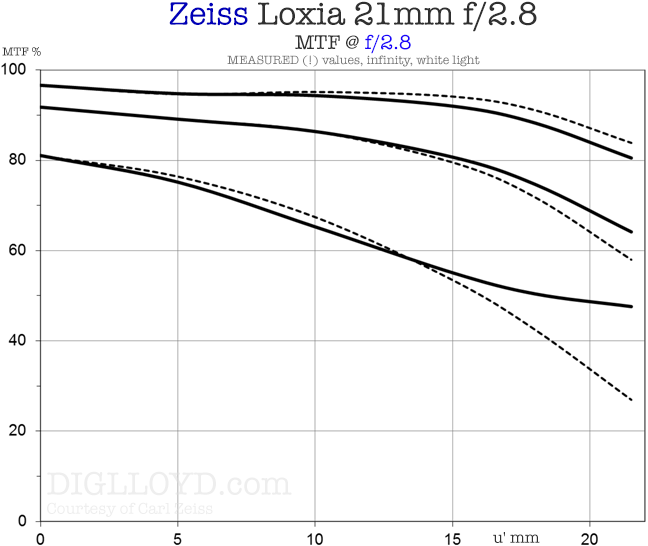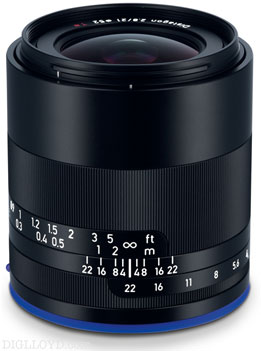EXCERPT page containing first few paragraphs. 2024-04-19 19:25:39
UA_SEARCH_BOT_compatible_botmozilla/5.0 applewebkit/537.36 (khtml, like gecko; compatible; claudebot/1.0; +claudebot@anthropic.com) @ 3.141.202.54
For full access, subscribe here. Or click title to login. ![]()
MTF for Zeiss Loxia 21/2.8 Distagon
MTF wide open shows world-class contrast in the center, declining steady and gracefully across the frame (which is at least partly a mild field curvature).
In the central 1/3 or so, performance is already near-optimal wide open at f/2.8. Peak performance is nearly reached by f/4, but f/5.6 smooths out the field, which has some field curvature (focusing closer at the periphery than the center aka “forward field curvature”).
The use of f/8 will deliver a bit more depth of field, but it does not improve upon the outstanding quality at f/5.6; it actually declines a little overall from diffraction. Similarly, f/11 dulls the image significantly over f/8 (compare f/8 to f/11 and see all curves drop). However, the use of diffraction-mitigating sharpening for f/11 can yield images as good as f/8 (or very nearly so), but increased depth of field; see Mitigating Micro Contrast Losses from Diffraction Blur. That extra depth of field can matter little or matter signficantly; see the crops in the Orange Tree Trunks example.
Article continues for subscribers...
Diglloyd Guide to Mirrorless is by yearly subscription. Subscribe now for about 25 cents a day ($90/year).
BEST DEAL: get full access to ALL 8 PUBLICATIONS for only about 75 cents a day!
Diglloyd Guide to Mirrorless offers comprehensive integrated coverage of most APS-C and full frame mirrorless cameras and lenses.
Special emphasis is placed on Sony full-frame, including Sony lenses and the high performance Zeiss Batis and Zeiss Loxia lenses plus Rokinon/Samyang and others. Fujifilm X, Olympus and Panasonic M4/3, Sigma dp Merrill and dp/sd Quattro are also covered in depth. Years in the making, it offers a wealth of material for choosing and using a mirrorless camera.
- Make better images by learning how to get the best results right away. For example, the best way to set up your Sony camera.
- Save money by choosing the right lens for your needs the first time, particularly with the numerous lenses available for Sony.
- Make better images, a sort of “cheat sheet” saving yourself months or years of ad-hoc learning—best practices and how-to and processing parameters are discussed and shown.
- Jaw-dropping image quality found nowhere else utilizing Retina-grade images up to full camera resolution, plus large crops.
- Real world examples with insights found nowhere else. Make sharper images just by understanding lens behavior you won’t read about elsewhere.
- Aperture series from wide open through stopped down, showing the full range of lens performance and bokeh.
- Optical quality analysis of field curvature, focus shift, sharpness, flare, distortion, and performance in the field.
Want a preview? Click on any page below to see an excerpt as well as extensive blog coverage, for example on Sony.



